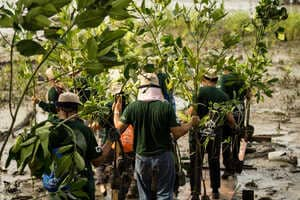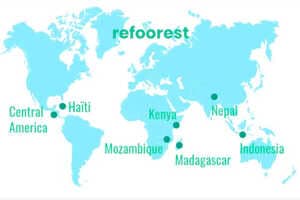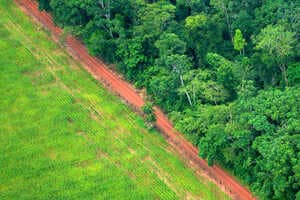Impactful Tree-Planting Organizations




















Trees for the Future Teaches Sustainable Farming Techniques
Kalin Ned — December 2, 2019At Trend Hunter, we have arranged to plant 1,000,000 trees through Trees for The Future, an organization we have partnered with because they don't just plant trees, they create forest gardens that restore land while providing families with income, empowerment and education about sustainable farming.
Giving Tuesday is just around the corner and it would be worthwhile to donate strategically. With the impending consequences of climate change, investing in the planet and how we treat it is a worthwhile endeavor. Humans need to rethink concepts like production, consumption, lifestyles, and so on. Many communities and not-for-profits have dedicated their time and resources to assist in the radical shift of values and priorities, striving to initiate change and awareness on the local and global levels. In this category, organizations like Trees for the Future stand out as an exuberant example.
Trees for the Future has been reforesting the globe for 30 years. The organization’s impact can be seen in more than 60 countries and 160 million trees. Through years of research and development, Trees for the Future knows that planting a seed will surely contribute to countering deforestation but will do little for the communities in the vicinity if the root cause of deforestation is not addressed. As a result, Trees for the Future shifted its focus to training smallholder farmers who typically clear their land in an effort to grow more crops. Trees for the Future’s Forest Garden Approach teaches farmers how to work with the land instead of against it. The organization initiates collaborations on the local level to educate farmers on sustainable agriculture techniques and, as a result, empower their communities through enabling land to be used as “a reliable source of nutrition and income.” The four pillars of this method – which include protection of soil, crop diversification, optimization of growing, and economic scaling, are taught to local farmers over the course of their four-year program. By the end of the four years, farmers see an average 400% increase in income and are able to regularly feed themselves and their families. And as they are planting more trees each year as opposed to cutting them down, they effectively end the local cycle of deforestation.
Trees for the Future has an ambitious goal – the organization seeks to plant 500 million trees in 125,000 Forest Gardens, helping one million people out of hunger and poverty by the year 2025. The not-for-profit is supported through fundraising, institutional giving, in-kind donations, and business partnerships. The organization is vocal in that they cannot achieve their goals alone, so they are sharing their methodology and insight with organizations and individuals working in humanitarian development and/or agroforestry. By building collaborative partnerships with other organizations, Trees for the Future is able to put the Forest Garden Approach in the hands of more farmers. To that end, Trees for the Future hosts regular educational workshops and has launched The Forest Garden Training Center as a free public resource “where agroforestry practitioners can come and learn The Forest Garden Approach, become a certified trainer and track their impact.”
The organization says they will continue connecting with farmers and sharing their resources with the public until every farmer is able to have a Forest Garden on their land. The progress of Trees for the Future can be seen through their 2019 Impact Report.



